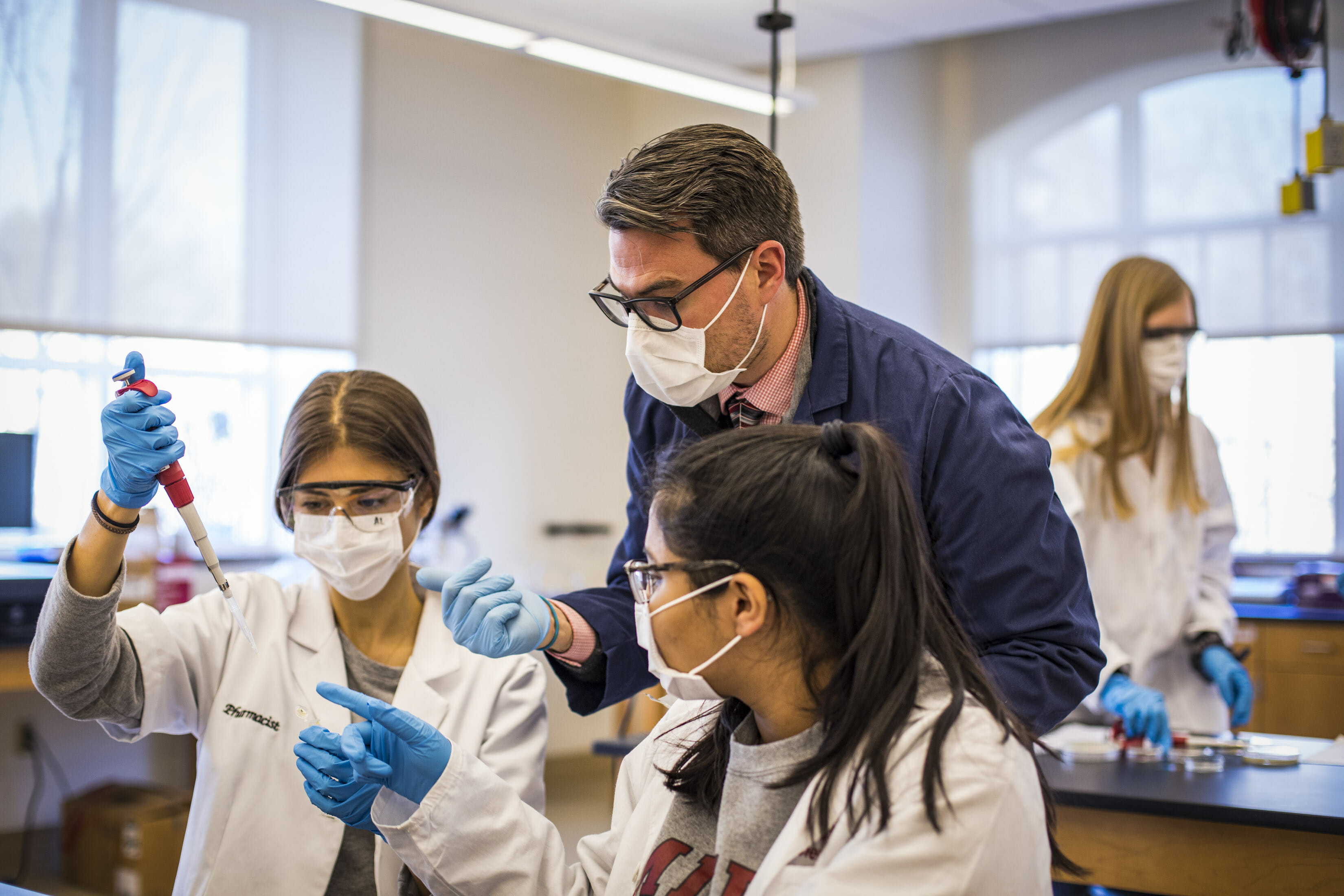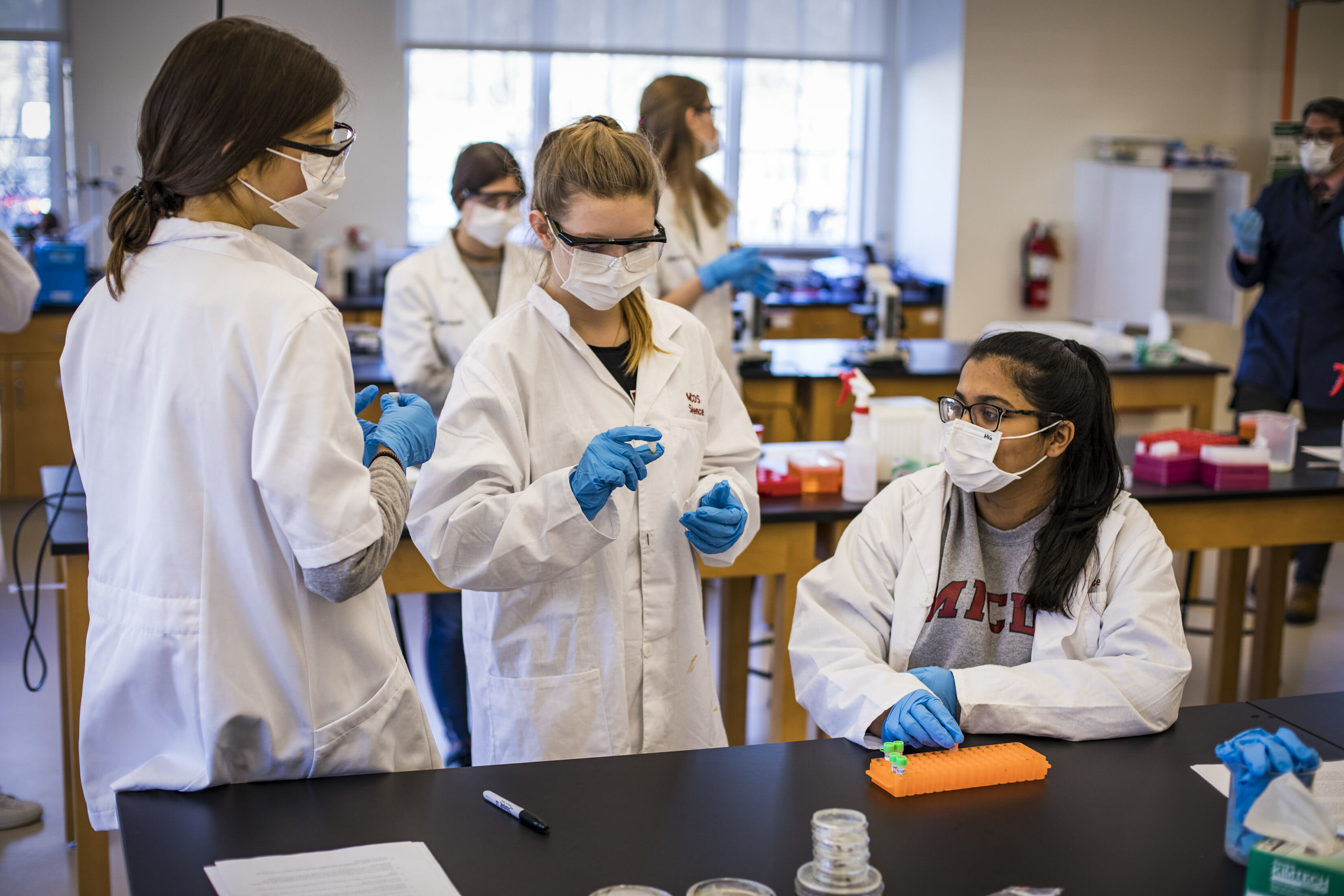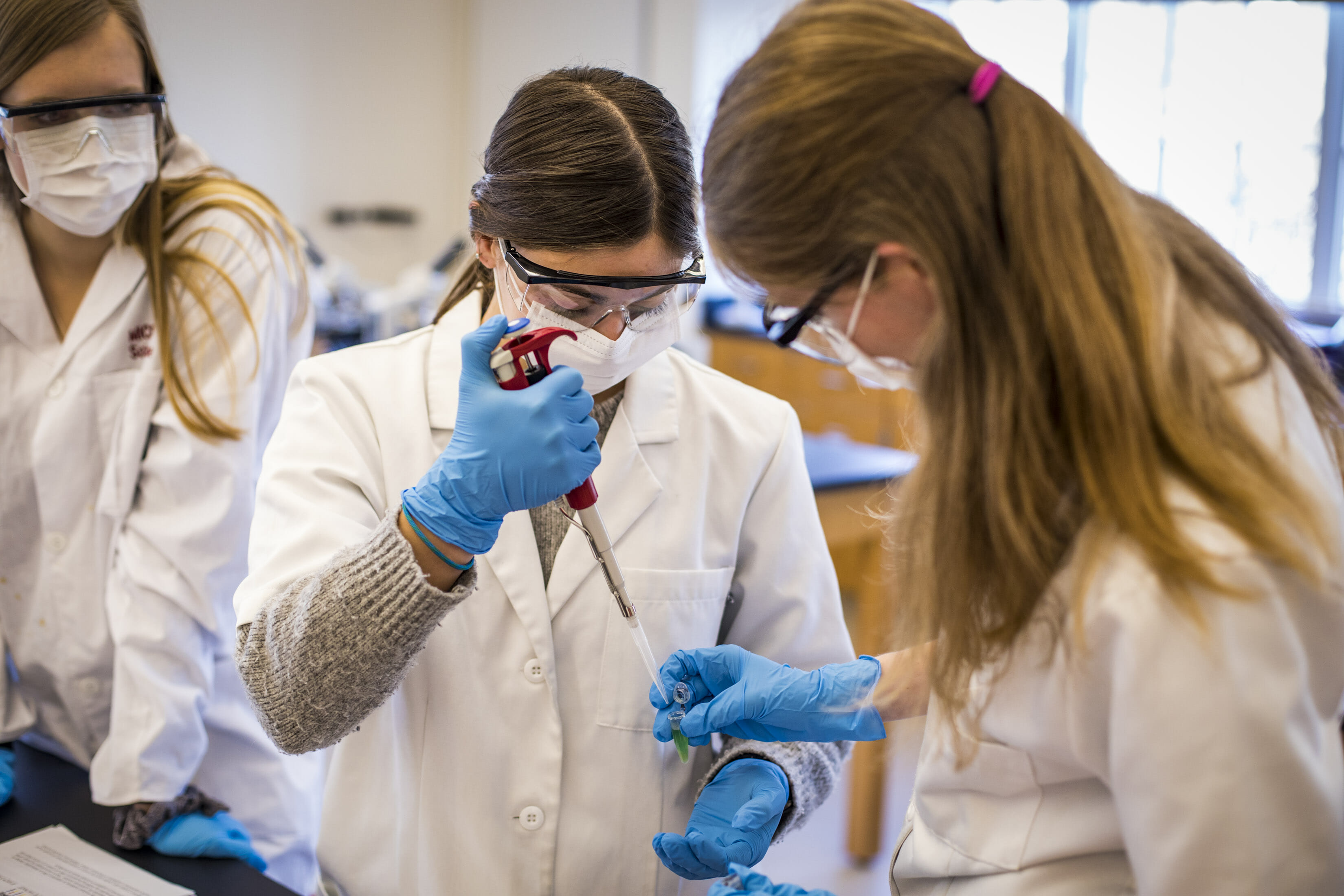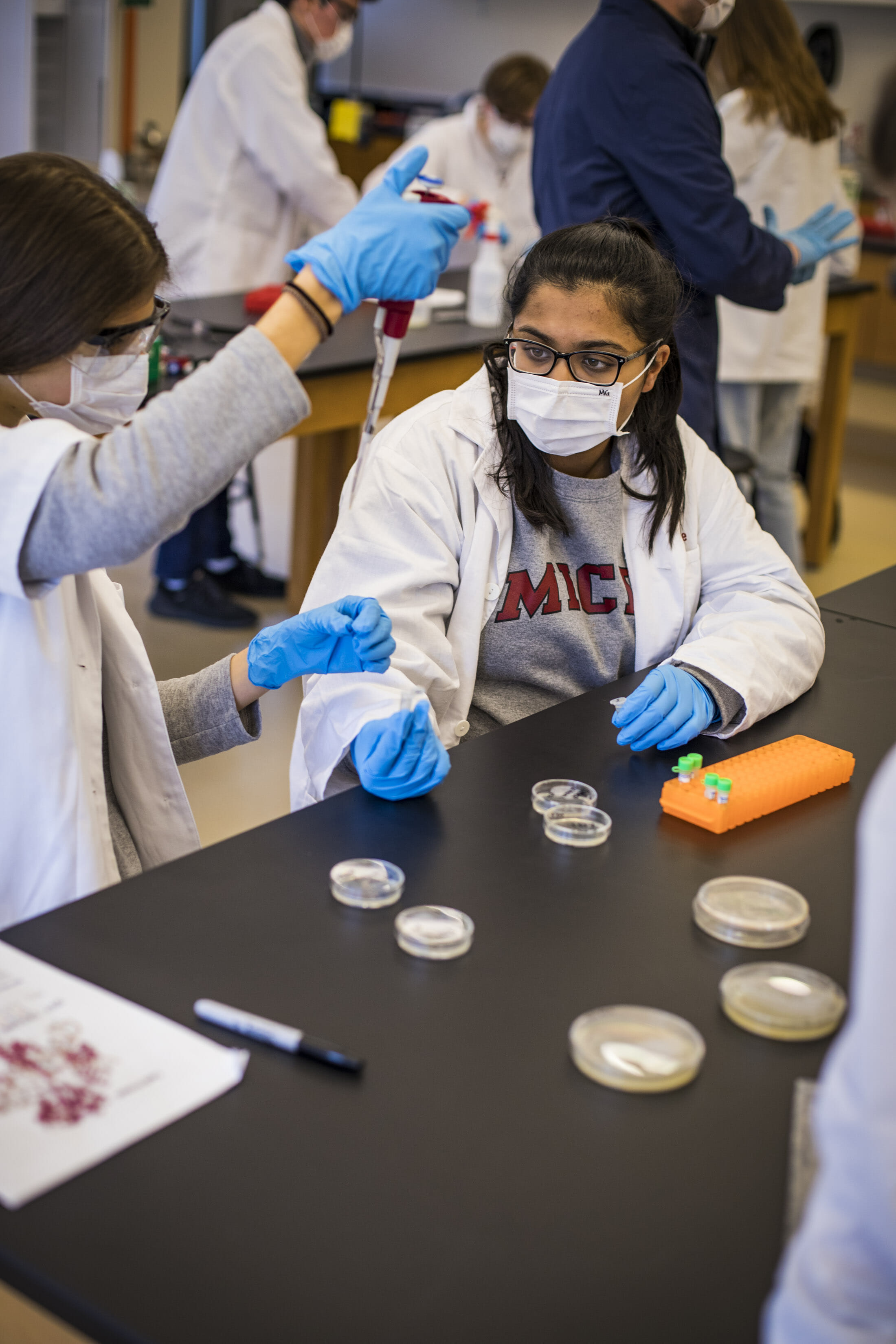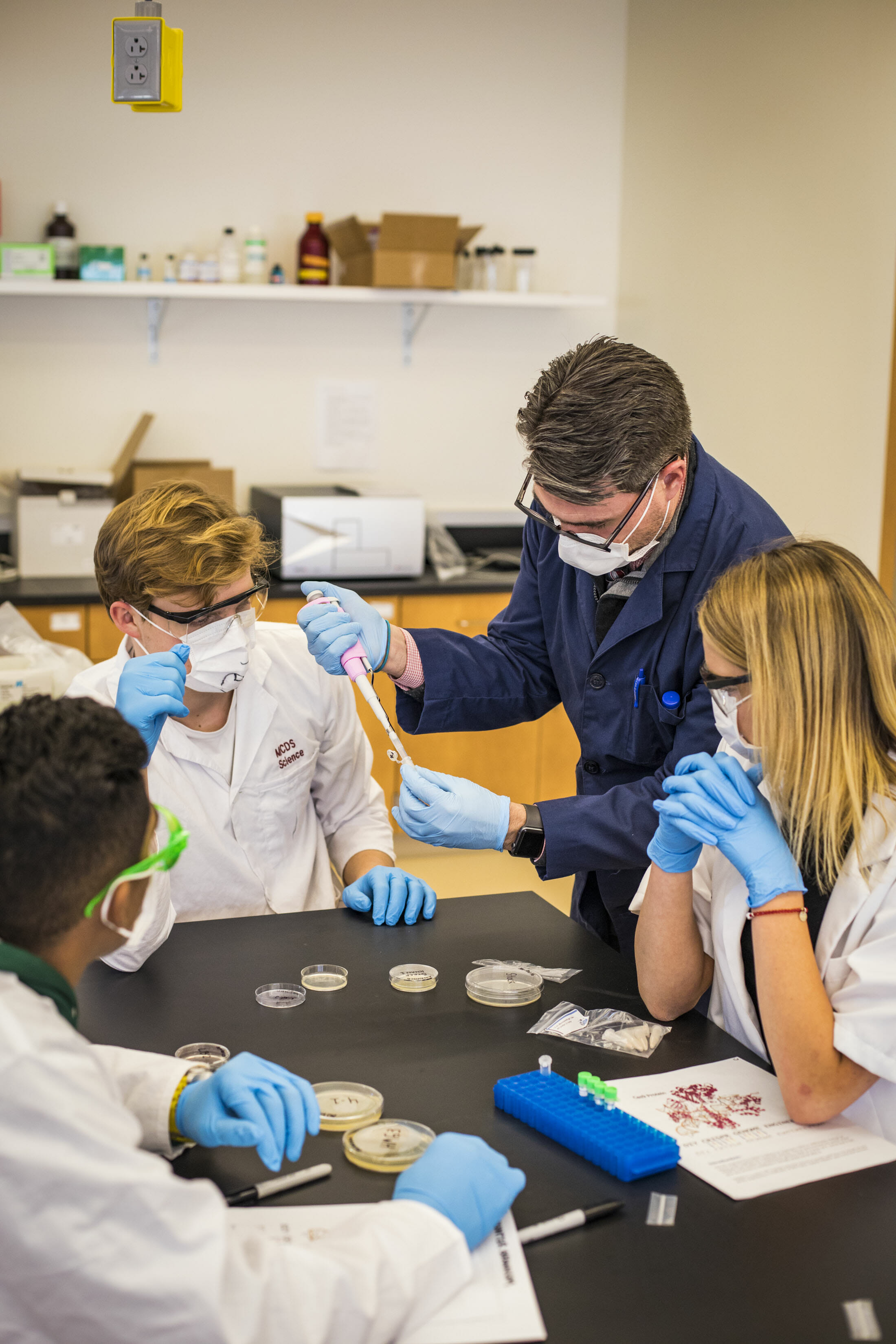Five years ago, the technology applied in our MICDS autotroph biological design class did not exist. Last week, Upper School Science Teacher Paul Zahller introduced his class to the ground-breaking CRISPR-Cas9 tool. The gene editing technology uses a set of molecular scissors to allow you to cut or edit the DNA that already exists in a plant. The technology is different from older genetic modification techniques that insert foreign DNA into the chromosome to create genetically modified organisms (GMOs).
In the lab, Mr. Zahller’s class applied the capabilities of CRISPR-Cas9 to bacteria. They had a string of bacteria which lacked a certain gene that would help it tolerate living in a hostile environment. By editing that gene in the lab, students engineered a „super bacteria“ that could survive toxins, ultimately enabling it to exist in that same, previously hostile environment.
The class went on to discuss the implications of this ground-breaking biotechnology. „Part of what we’re after is demonstrating the simplicity of the technology. It’s amazing, but it’s also potentially horrifying,“ shared Mr. Zahller. The class acknowledged that these small changes to genes and DNA could have an astronomical impact. On the other end of the spectrum, Zahller shared that CRISPR-Cas9’s potential is „the most exciting technology ever discovered for biology.“
As the best city in the world for studying plant science, how exciting it was to see so many seeds of possibility planted through gene editing pioneering in our MICDS plant science class!
